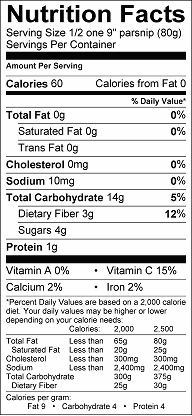What, you don’t reach for parsnips the second you get to the store? Not on your grocery list? Kids aren’t begging for them?
We hear you there. This is where we have to get creative – when it’s all said and done, parsnips are considered “the carrot alternative.” So much so, people actually can confuse them for carrots to this day. What sets parsnips apart? The color!
Carrots? Now we’re talking.




